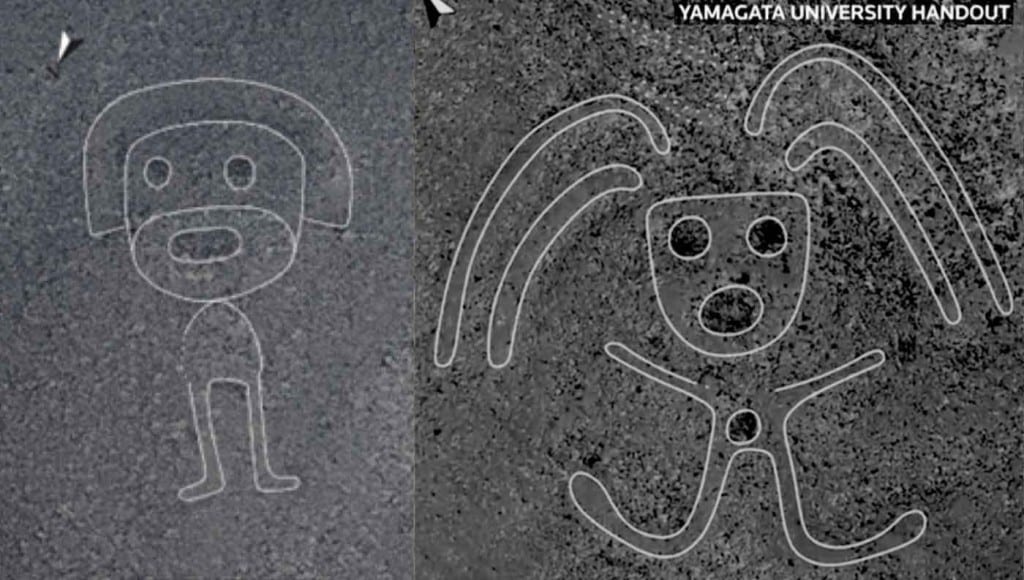Over 100 New Nazca Lines Discovered in Peru Designed by Ancient People


In a major archaeological discovery, a team of Peruvian and Japanese researchers have discovered 168 new geoglyphs in the ancient Nazca Plain in Peru, near to the enormous glyphs that remain as mysterious as they are famous.
Found during 2 years of aerial surveys, their discovery led to the creation of a new archaeological park to protect them.
The famous Nazca Lines are enormous depictions of humans and animals carved into the ground of a flat plain by ancient peoples. Their monumental scale was only discovered after flight, when a pair of eyes could be high enough to see the whole two dimensional image.
The originals measure hundreds of yards, but the new discoveries are smaller. Jorge Olano, head archaeologist for the Nazca Lines research program, said the new geoglyphs averaged between two and six meters (6.56 to 19.7 feet) in length.
They were made by removing the black stone of the plain to uncover its white soil below, and line series of ancient trails.
Masato Sakai of Yamagata University and his team of Japanese archaeologists have been working in the area since 2004, and this is not their first discovery.
By 2018, the team had identified 190 geoglyphs by collecting images from aerial surveys and drones, which when added together with this latest batch makes for a total of 358 previously-unknown geoglyphs discovered by the Japanese-Peruvian team.
Believed to have been carved between 100 BCE and 200 CE, they depict humans, camelids such as llamas, alpacas and guanacos, birds, orcas, felines, and snakes, and at times can look almost childish.
Their purpose, as well as their larger cousins which make up a UNESCO World Heritage Site, is unknown.
WATCH aerial footage released by the university… (Note: GNN has no affiliation with any ads displayed)
SHARE This Amazing Addition To An Already Amazing Discovery With Your Friends…
